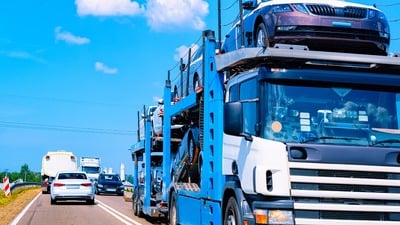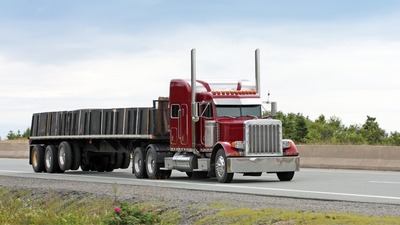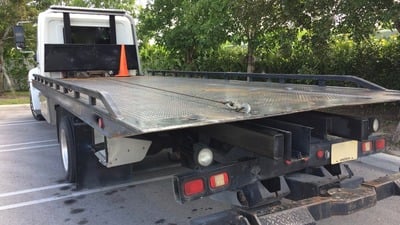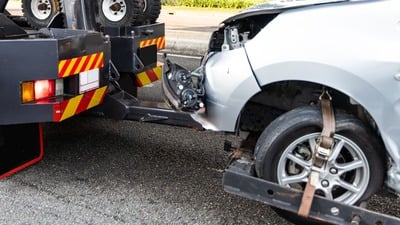Introduction to Recovery Straps: Essential Towing Toolkit Items
When you're stuck, or someone else is, and you need to pull a vehicle out of trouble, that's where recovery straps come into play. These are not just any straps—they're a lifeline during off-road adventures or when you face the unexpected on the road. Let’s break it down. Recovery straps are made from strong, stretchy materials designed to handle heavy loads. Unlike tow straps, which are rigid and can snap under pressure, recovery straps have a bit of give. This elasticity allows them to absorb the shock of pulling, making them safer and more effective for vehicle recovery. Think of it like this: when you tug at something stuck, you don't yank with all your might instantly. You give a little pull to get a feel, then a big heave. Recovery straps do that on a much larger scale. You'll mostly find them in nylon, known for its strength and stretchiness. They come in various lengths and widths, tailored to different weights and sizes of vehicles. So, before you add one to your toolkit, think about what you drive and what you might need to pull. This isn't just another piece of equipment. It's your must-have for getting out of tough spots safely and efficiently.
Understanding the Role of Recovery Straps in Vehicle Towing
When your car gets stuck in mud, sand, or snow, a recovery strap is your best friend. It's a sturdy strip of fabric designed to pull a vehicle free without causing damage. Unlike chains or ropes, recovery straps have the ability to stretch. This elasticity creates kinetic energy, helping to jerk the vehicle out safely. Think of it as a rubber band effect – the stretch builds energy and then pulls the stuck vehicle with more force as it snaps back. Recovery straps are usually made from nylon or polyester, materials tough enough to handle the stress of towing but gentle enough not to damage the vehicles. It's crucial to choose a strap with the right weight rating for your vehicle. Using one too weak could lead to the strap breaking under pressure. Always, and I mean always, hook the strap to the vehicle's frame or designated recovery points, not to bumpers or other parts that can easily be torn off. Safety first – ensure no one is standing close to the strap when in use. A snap-back can cause serious harm. So, remember, whether you're off-roading or facing the wrath of winter roads, a good recovery strap is an essential tool for any towing toolkit.
The Different Types of Recovery Straps and Their Uses
Recovery straps are a towing must-have, offering a lifeline for stuck vehicles. Not all straps are equal, and picking the right type is key to a safe and successful vehicle recovery. First up, you've got the nylon straps. Known for their stretchiness, they're great for pulling a vehicle out thanks to the kinetic energy they build up. This ‘snap’ effect can yank a vehicle out of mud or sand without much drama. Then, there's polyester straps, less stretchy, more for towing than hardcore recovery. They're good for those steady tow jobs where you don't need the elastic effect but want something strong and reliable. Choosing between nylon and polyester comes down to what mess you're expecting to get into. Nylon for the sticky, mucky situations where a bit of a run-up and yank can get a vehicle unstuck. Polyester, when it’s more about moving a vehicle that can't move on its own but isn't buried in the deep stuff. Each type has its place in your toolkit, and getting familiar with both ensures you're ready for whatever the road or off-road throws at you.
The Importance of High-Quality Recovery Straps for Safety
Choosing a good quality recovery strap is critical for safe towing. It's not just about strength; it's about reliability. A high-quality recovery strap can mean the difference between getting stuck and getting back on the road. These straps are designed to stretch and recover, providing a controlled, safe pull. They reduce the risk of damage to vehicles and minimize the chance of injuries. Cheap straps might break under pressure, creating hazardous situations. Always opt for straps made from durable materials like nylon, and check for a high load capacity. Remember, a good recovery strap turns a tough situation into a manageable one. It's an essential piece of your towing toolkit for safety.
Key Features to Look for When Choosing Recovery Straps
When you're in the market for recovery straps, you gotta keep your eyes peeled for some key features. First off, focus on the strap's material. You want one made of nylon or polyester because they're tough and can handle a lot of stretching and pulling without breaking. Next up, check the strap's breaking strength. This number should be way higher than the weight of the vehicle you'll be towing. Why? It's all about safety and making sure the strap can handle the job without snapping. Another big thing is the length and width of the strap. Longer and wider straps distribute the pull better, making them safer and more effective. Look for straps with reinforced loops at the ends too; they add extra strength where it's needed most. Lastly, color matters more than you think. Bright colors like neon green or orange are easier to see, which helps during recovery situations, especially in bad weather or at night. Remember, picking the right strap means choosing safety and efficiency over cutting corners.
How to Properly Use Recovery Straps for Maximum Efficiency
First, let’s get straight to the point. Using a recovery strap is all about safety and getting the job out of the ditch, mud, or whatever mess you’re in, effectively. Always, and I mean always, check your strap before use. Look for any wear or tear. A damaged strap is a no-go. Now, find a solid anchor point on the vehicles. This isn’t the time for guesswork. The frame or a recovery point designed for this purpose will do the trick. Avoid using parts that can easily break off, like bumpers or steering components. When you’re set, carefully hook up the strap. Now, for the driver doing the pulling, it’s crucial to take it slow. A sudden yank can do more harm than good. Imagine gradually increasing the tension until the stuck vehicle eases out. Oh, and both drivers need to be in sync. Communication is key. One more thing, once you’re done, inspect and store your strap properly. It’s all about respecting your gear. That’s it. Straightforward, right? Use your recovery strap wisely and keep both the strap and your vehicle in fighting form for the next pull.
Maintenance and Care Tips for Recovery Straps
To keep recovery straps in top shape, you need to follow a few simple steps. First, clean them after every use. Mud, sand, and bits of debris can damage the fibers, so washing them with mild soap and water will prevent this. Don’t use harsh chemicals; they can weaken the strap. After washing, let them dry completely but not in direct sunlight. UV rays can break down the strap material. Store your straps flat or loosely rolled in a dry, cool place. Avoid places with excessive heat or moisture as they can encourage mold growth or damage the strap. Finally, inspect your straps regularly for signs of wear and tear such as fraying, cuts, or excessive stretching. If you spot any damage, replace the strap. It's not worth the risk of using a compromised strap during a recovery situation. Following these maintenance steps will ensure your recovery straps stay reliable for longer, making your towing toolkit ready for any challenge.
Common Mistakes to Avoid When Using Recovery Straps
When using recovery straps, people often make simple yet impactful mistakes. First, they underestimate the importance of choosing a strap with the right weight rating. It's crucial. If the strap is too weak, it might snap under pressure, turning into a dangerous projectile. Go for a strap rated for at least the weight of your vehicle, better yet, double that figure for safety. Another common blunder is not inspecting the strap before use. Look for tears, frays, or any damage. Using a damaged strap is asking for trouble. Also, attaching the strap to the wrong points on a vehicle is a no-go. Don’t hook it onto a bumper, axle, or any part not designed to take the load. Stick to recovery points built for this purpose. And never, ever, think a longer strap means you're safer. Distance doesn't equate to safety. It might even increase the chances of the strap snapping back if it breaks. Lastly, speeding up during a recovery attempt is dangerous. A slow and steady pull is what you need to get a vehicle out safely. Keep these tips in mind to avoid turning a recovery task into a risky mission.
Investing in the Right Recovery Straps: Long-Term Benefits
Investing in high-quality recovery straps might seem like a small detail, but it's a decision that pays off big time. Here's the scoop: opting for top-notch straps means you're less likely to face a snapped strap in the middle of a job. Think about it - cheaper straps can break, leaving you in a tough spot, possibly causing damage or even injury. On the flip side, durable, well-made straps can handle heavier loads and resist wear and tear, meaning they'll last way longer. They offer better performance, too, so you can tow with confidence, knowing your gear won't let you down. Plus, consider this: using reliable straps reduces the risk of damage to the vehicles you're towing, which keeps your reputation solid. In a nutshell, spending a bit more now on high-quality recovery straps saves money and headaches down the road. It’s a smart move for anyone serious about towing.
Conclusion: Enhancing Your Towing Experience with the Best Recovery Straps
To sum it up, having the right recovery straps in your towing kit isn't just about being prepared. It's about making each tow safer and more efficient. Quality matters because when you're stuck or helping someone out of a jam, you need a strap that won't snap under pressure. Look for straps made from durable materials like nylon and those with a high tensile strength. Remember, a good recovery strap can be the difference between an easy pull-out and a complicated rescue operation. Investing in the best might seem like a pinch on the wallet today, but when you find yourself needing it, you'll be glad you didn’t skimp. Safe towing starts with the right gear, and a top-notch recovery strap is essential.





